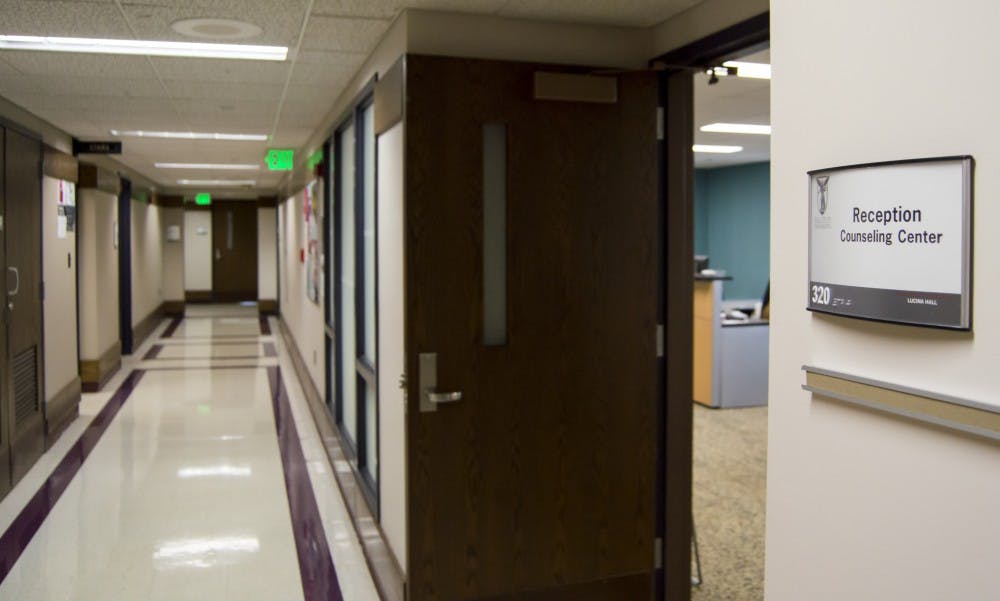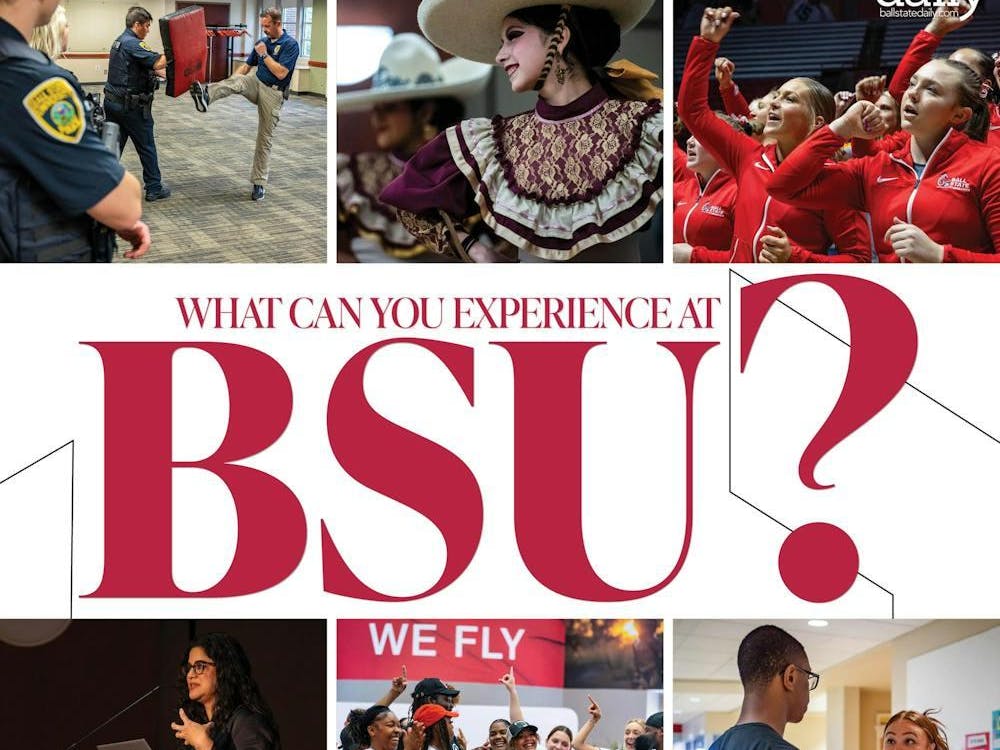Approximately 529 students have requested services since the beginning of the spring semester, according to Bill Betts, director of counseling and health services.
As promised at the beginning of the school year, the Counseling Center is continuing to implement changes to best serve Ball State students.
After seeing a significant increase in students requesting services from the short-term, focused treatment agency, Bill Betts, director of counseling and health services, said the center has made “a shift” in the way students schedule their first intake appointment with a therapist.
“In fall of 2017, 7 percent more students requested services than in fall 2016. Since August of 2017, we have seen an 11 percent increase in the number of students requesting services,” Betts said. “Over the last several years the number of students requesting services has risen between 3 to 5 percent each year.
“We had a recognition that we needed to find a system that gets folks in faster and directly to the services they need.”
Betts said the growth in the number of students requesting counseling services is “not just at Ball State,” but can be seen everywhere across the country. And he’s right. Counseling centers nationwide, specifically on college campuses, struggle to meet the needs for mental health care.
A 2014 study by the American College Counseling Association found 94 percent of counseling center directors report that recent trends lean toward greater number of students with severe psychological problems — including anxiety disorders and depression — are found on their campuses.
In a previous interview with The Daily News, Jagdish Khubchandani, an associate professor of health science in the department of nutrition and health science, said institutions are continuing to work on creating tactics to address student needs.
“Universities nationwide are reconsidering their role and using strategies to manage caseloads to deal with funding and staffing challenges like using group therapy, limit the number of sessions, limit the time per session, using brief therapy, referring to external sources and utilizing doctoral students as counselors,” Khubchandani said.
Starting this semester, Ball State students who walk in or call to request services at the Counseling Center will immediately be scheduled an appointment to meet with a licensed clinician. Currently, the average wait time for the next open appointment for non-urgent intake is five business days.
The first appointment entails an hour-and-a-half session where students first fill out paperwork on an iPad. After that, students sit down with an intake counselor who will talk through the responses written on the initial paperwork and ask questions in order to get a better understanding of what specific services would best fit the need of the student.
Recommendations could include individual or group therapy, as well as services outside of the Counseling Center like WellTrack, an online/mobile self-help program specifically designed for help with stress, anxiety and depression.
“In some cases, we’ve been able to give someone what they need in one session and they’re done,” Betts said. “In other cases, students will be assigned a therapist.”
In addition to shortening the paperwork and discontinuing phone screenings, Betts said one specific feature that is different from the previous system is the staff members who initially meet with students.
“We have our most skilled folks, licensed psychologists and master level staff, doing these triage appointments, which means that we are much better able to use our time efficiently,” Betts said. “If you’ve been doing this for 10 or 15 years, you know which questions to ask and you can get right to the point quickly.”
Currently, the Counseling Center staffs 26 therapists — including staff and students — who primarily work in the clinic part-time. The center is still not fully staffed, though, as Betts said he is in the process of interviewing in order to fill two psychologist positions.
Before the new system was established, students like Caitlyn Stout, may have only met with graduate students during the initial appointment. For the sophomore deaf education major, the process, which she went through last semester, left her with an unfavorable opinion of the Counseling Center.
“She sat in front of me ask asked me tons of questions. She told me she was not a counselor and this was not a counseling session, but it was basically a pre-session to see if I would be a good fit for the counseling program,” Stout said. “After talking, she pre-diagnosed me with depression and a maybe an eating-disorder. I didn’t know how accurate this was given at the beginning she said she wasn’t a counselor, but she was a grad student.”
Stout struggled with depression and self-hatred and was initially looking for answers when she turned to the on-campus resource.
“My life just felt empty, like I was building up towards a future I never thought I would be able to actually achieve,” she said. “I really just wanted answers for why I was feeling the way I was. I didn’t want to tell my parents because they would go way overboard and I knew this was a way I could kind of get around telling them.”
Mental illness is common among college students today. In a 2016 survey of students by the American College Health Association, 53 percent of students surveyed reported feeling things were hopeless and nearly 40 percent reported feeling "so depressed that it was difficult to function."
Stout said she waited weeks before receiving an email from the Counseling Center recommending that she participate in classes before going through another pre-session to see if she needed to see a therapist.
“I didn’t really know what to expect going to the Counseling Center, but it wasn’t that,” Stout said. “I was hoping at the least to sit down with an actual counselor.
“There was a disconnect. It wasn’t an unwelcoming environment but it just seemed very ‘set-up.’ Everyone was kind and friendly because they had to be, not because they wanted to be. That’s the impression I got from it, anyway.”
While Betts said the feedback the Counseling Center receives from a satisfaction survey each year shows “90 percent of people are satisfied with how the center addresses their needs,” he did recognize the issues that some students like Stout have felt with the previous system.
And even though the center is under pressure to get more students in at a faster pace, Betts said “nothing about therapy changes.”
“We are continuing to look at ways to get folks resources they need in a timely matter,” Betts said. “Our goal is to really help students be successful in college and so we do whatever we can to address those issues and hopefully to prevent the need to come in and do therapy.”
Contact Allie Kirkman with comments at aekirkman@bsu.edu or on Twitter @alliekirkman15.





